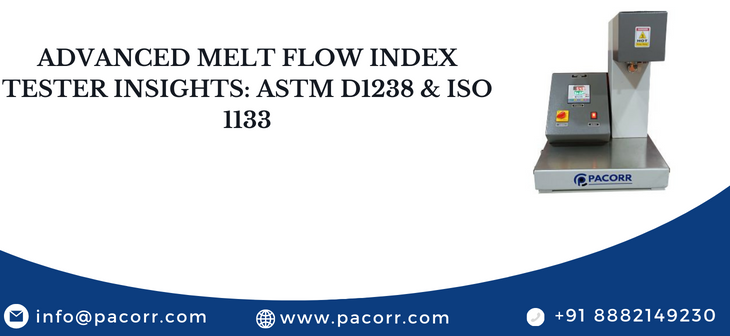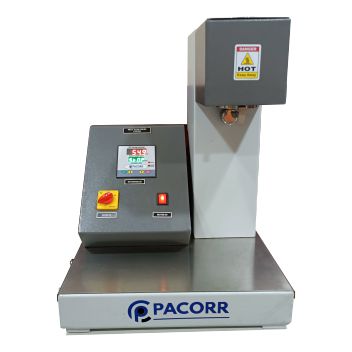
 Melt flow index (MFI) testing is a critical process in the plastics industry, providing valuable insights into the flow characteristics of thermoplastic polymers. Manufacturers and quality control laboratories rely on melt flow testers to determine the ease with which a plastic can be molded and its consistency. This article delves into the functionalities and standards, specifically ASTM D1238 and ISO 1133, of melt flow index testers provided by Pacorr, highlighting their importance in ensuring high-quality plastic products.
Melt flow index (MFI) testing is a critical process in the plastics industry, providing valuable insights into the flow characteristics of thermoplastic polymers. Manufacturers and quality control laboratories rely on melt flow testers to determine the ease with which a plastic can be molded and its consistency. This article delves into the functionalities and standards, specifically ASTM D1238 and ISO 1133, of melt flow index testers provided by Pacorr, highlighting their importance in ensuring high-quality plastic products.
Understanding Melt Flow Index (MFI) Testing
The Melt Flow Index (MFI) is a measure of the rate of extrusion of molten thermoplastic polymer through a die of specified length and diameter under prescribed conditions of temperature and pressure. The result, expressed in grams per 10 minutes, indicates the fluidity of the plastic; a higher MFI signifies a material that flows easier, generally used in processes like injection molding and extrusion.
Significance of ASTM D1238 & ISO 1133 Standards
The American Society for Testing and Materials (ASTM) and the International Organization for Standardization (ISO) provide guidelines to ensure the consistency and reliability of testing methods. ASTM D1238 and ISO 1133 are the two main standards governing the MFI testing:
- ASTM D1238: This standard specifies the method for measuring the flow rates of thermoplastics by extrusion plastometer. It is crucial for determining material quality in high-shear applications such as thin-wall moldings and multifilament fibers.
- ISO 1133: While similar to ASTM D1238, ISO 1133 offers procedures for both the determination of melt mass-flow rate (MFR) and melt volume-flow rate (MVR). It is particularly relevant in settings where volume-related properties like density variations play a critical role.
Pacorr’s Melt Flow Index Testers: Features and Benefits
Pacorr, a leading manufacturer of testing equipment, offers melt flow index testers that are not only compliant with ASTM D1238 and ISO 1133 but are also designed with cutting-edge technology to enhance usability and precision. Some of the key features of Pacorr's MFI testers include:
- Digital Display: For precise control and monitoring of temperature and extrusion rates.
- Automatic Cutting: Enhances the accuracy of each test by ensuring consistent sample sizes.
- User-Friendly Interface: Simplifies the testing process, making it accessible even for new operators.
The benefits of using a Pacorr melt flow index tester extend beyond simple compliance with standards. These testers facilitate better predictability in processing and end-product performance, crucial for manufacturers aiming for top-tier product quality and consistency.
Role of MFI Testing in Product Development and Quality Assurance
In product development, the MFI value helps in selecting the right materials for specific applications, influencing factors like strength, flexibility, and durability of the final product. For quality assurance, consistent MFI values ensure that the plastic products will not only meet but exceed customer expectations in performance.
Melt flow index testers are indispensable tools in the plastics industry. Standards such as ASTM D1238 and ISO 1133 ensure that these tests are reliable and can be replicated, guaranteeing that materials meet stringent quality requirements. Pacorr's commitment to excellence is evident in their advanced melt flow index testers, which are pivotal in maintaining the highest standards of quality in plastic manufacturing.
Inbound and Outbound Link Suggestions
- Inbound: Link from other articles on plastic testing methods or Pacorr product pages to provide a comprehensive understanding of testing equipment available.
- Outbound: Link to the official ASTM and ISO pages for readers seeking detailed standards information or to educational resources discussing thermoplastic properties.
By incorporating a Pacorr melt flow index tester into their quality control protocols, manufacturers can significantly enhance their product quality, ensuring that they not only comply with international standards but also exceed their own benchmarks for excellence.

